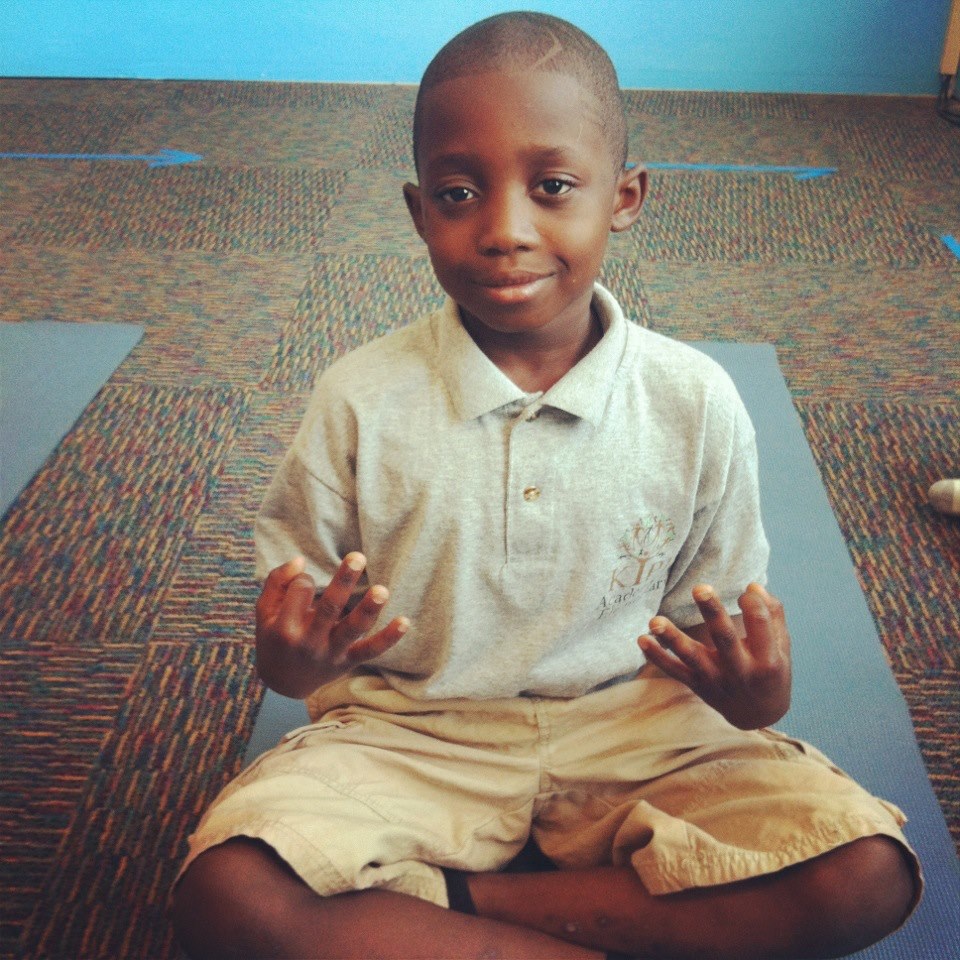I practiced yoga for 12 years before I truly understood the powerful impact it could have on my relationship to circumstances that were challenging or out of my control. Up until that point I had mostly practiced vinyasa, and meditated occasionally afterwards when I had time. Generally, I had a sense that yoga gave me tools to feel emotionally, physically and mentally more balanced, but did not “get” the personal power that a yoga practice could make accessible until I was offered a role teaching 400 kids yoga twice a week at a school in the South Bronx. While my initial enthusiasm for what seemed like a revolutionary role at a school was exuberant, I quickly realized that there was such a thing as too much yoga. I quickly became overwhelmed, sleep-deprived and frustrated. I was doing two jobs at once: curriculum development AND instruction. I felt alone, with few trusted yoga allies teaching in schools to pow wow with about how best to teach 30 classes a week to kids and not lose my mind. My instinct was to bolt and get the heck out of there. And I almost did. For the first time my vinyasa practice was not even close to being “enough” to soothe my nervous system and settle my cuckoo crazy “monkey mind”. In fact, the activating charge of a typical vinyasa class was exacerbating my stress. My students and circumstances were teaching me that I actually had to dig deeper, to be more honest with myself about who I say I am VS. who I am actually being. I realized that though I had been practicing yoga for years, my practice was only just beginning. And moreover, I realized that the practice itself was one exploration after another designed to help me embody the spirit of yoga, not just “do” yoga.
No yoga teacher helped me realize this. My students did, and to this day they are the best yoga teachers I’ve ever had. My yoga practice, a yoga mentor and a team of equally stressed out educators of color who had my back helped hold the mirror up to my experience, and the habits I had that were unsupportive or even destructive. And boy was this sobering, humbling, humiliating even. And somehow, like magic, I increased my capacity to hold my perfectly imperfect self more gently and not run from my circumstances. This is yoga.
To cope with the all-consuming circumstances of that first year of teaching in schools, my practice went from an almost daily vinyasa class to restorative yoga, legs up the wall, mindfulness meditation and a hot bath on Friday nights. I learned the hard way at first to sit with my feelings, to take care of my emotional state first, so that I might not pour from an empty or polluted well when offering practices to my students. Doing this completely revolutionized me, and by default, my yoga classroom. I had misunderstood that what needed changing were the circumstances around me at the school (i.e. better “behaved” kids, or a less stressful work environment). The truth was that what needed changing was ME. I needed to walk my talk and BE this practice. I needed to honor my students needs for a teacher who was grounded and loving, by first practicing self-care and compassion with regard to my own needs.
What was remarkable that year was how I watched my students completely transform before my eyes because I transformed. It was like magic. While earlier in that year, I would fuss and fuss over what “to do”, i.e. getting my lesson plans, objectives and activities just right, it was actually my changed inner state that had the biggest impact on what my classroom felt like. Once I felt good, my classroom environment felt good. Once the vibe in my classroom felt good, my kids “acted good”. It really was a magical transformation.
Over the years, my yoga and mindfulness practice has supported me to get better and better at managing my own state, so that I have the composed state of mind required to manage classroom challenges and the varying needs of my students compassionately so that I can proactively sense how to guide my students toward a learning experience that is free from common obstacles that hinder learning.

